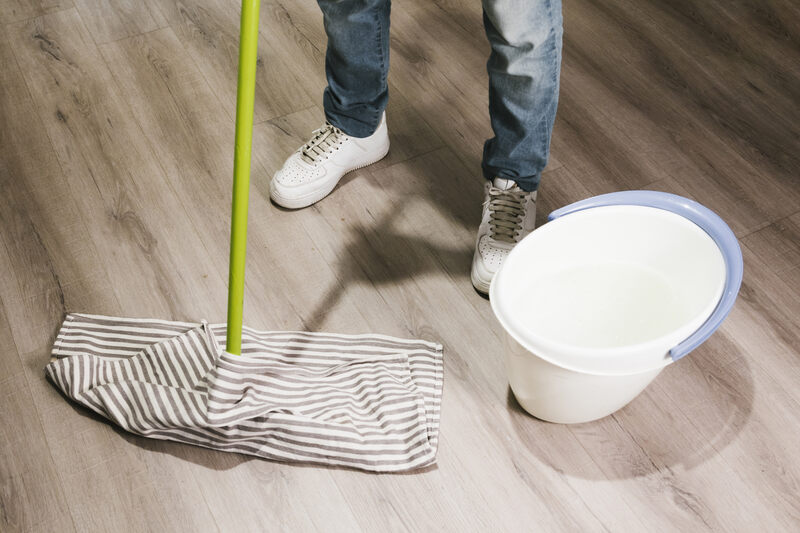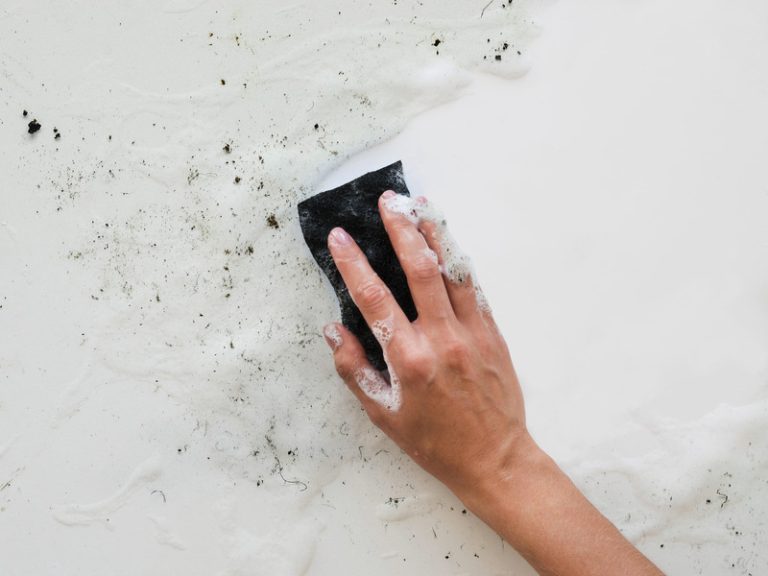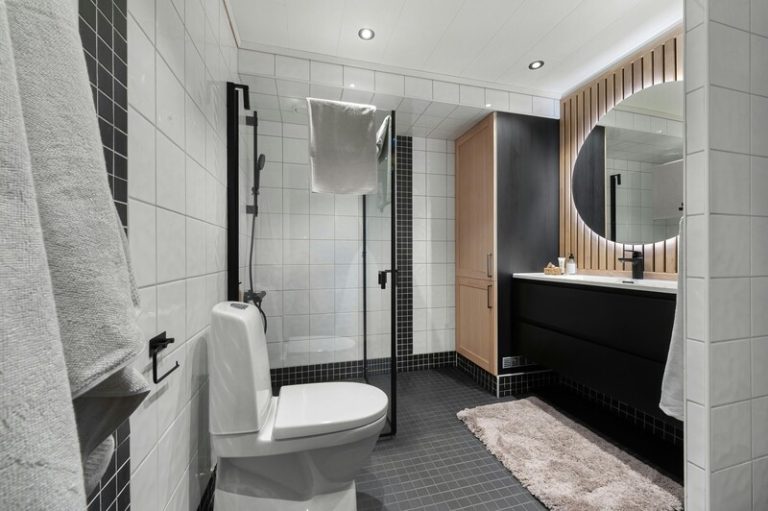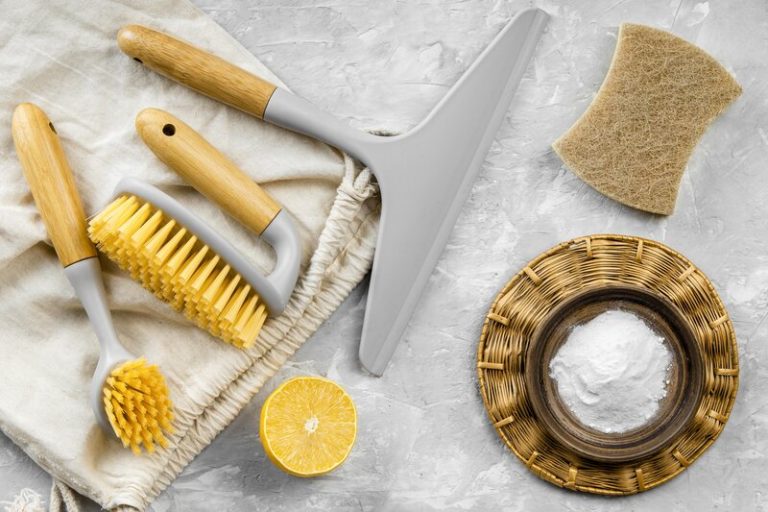Beyond maintaining its visual beauty, understanding how to clean vinyl plank floors is also important to prolong its life and reduce the risk of allergies and respiratory problems for homeowners.
In this article, we will discuss what vinyl plank floors are, why they are a great choice for your home, and most importantly, how to deep clean vinyl plank floors and maintain them properly.
Follow our best way to deep clean LVT floors to ensure your floors stay looking their best for years to come.
How often should I clean vinyl plank floors?
Vinyl plank flooring is a popular choice for homeowners due to its durability, ease of maintenance, and stylish appearance. However, like any type of flooring, vinyl plank floors need to be cleaned regularly to keep them looking their best and prevent damage.
Here is a general guide on how often you should clean vinyl plank floors:
- Daily: Sweep or vacuum your floors daily to remove loose dirt, dust, and debris. This will help to prevent scratches and keep your floors looking clean.
- Weekly: Mop your floors once a week with a solution of warm water and a mild dish soap. Be sure to rinse the mop frequently to avoid spreading dirt around.
- As needed: Spot clean spills immediately to prevent them from staining. For stubborn stains, you may need to use a commercial vinyl plank floor cleaner.
How to Clean Vinyl Plank Floors
Maintaining the pristine appearance of vinyl plank floors requires regular cleaning and care routines. Knowing how to clean vinyl plank floors can prolong its lifespan and preserve its aesthetic appeal. To ensure effective cleaning, follow these guidelines and expert tips.
a. Gather Your Supplies
Before you start deep cleaning vinyl plank flooring, gather the necessary supplies such as a mop, warm water, mild detergent, and cleaning cloth. Industry professionals recommend using quality cleaning products to ensure effective results.
Having a vacuum cleaner with a hard floor setting is useful for removing dirt and debris from the floors before mopping. Experts emphasise the importance of using pH-neutral cleaning solutions to prevent damage to the vinyl surface.
b. Sweep or Vacuum the Floor
Begin the deep cleaning LVT flooring process by sweeping or vacuuming the vinyl plank flooring to remove dirt, dust, and grime. Using a microfibre mop can help trap and remove particles effectively without causing scratches or damage.
After clearing the loose dirt, dust, and debris from the vinyl plank floors, it’s time to delve into the specifics of each cleaning method. Sweeping can be a more manual approach, using a broom to push the dirt into a dustpan. On the other hand, hoovering with a suitable attachment can efficiently suck up particles, especially in tight corners and edges.
Regarding the benefits of using a microfiber mop, cleaning professionals emphasise its ability to pick up even the smallest dirt particles due to the microfiber material. Unlike traditional mops, this tool is specifically designed for vinyl floors, ensuring a thorough cleaning without causing any damage.
c. Mop the Floor with Warm Water and Mild Detergent
After sweeping or vacuuming, mop the vinyl plank floors using a mixture of warm water and mild detergent. When mopping vinyl plank floors, it is essential to ensure that the water and detergent solution is not too concentrated, as this can leave residues that may attract dirt and grime over time.
Experts suggest using a microfiber mop head with a Cordless Vacuum, as it is gentle on vinyl surfaces and traps dirt and particles efficiently without leaving behind streaks or residue.
Can I use a steam mop to clean vinyl plank floors?
In general, it is not recommended to use a steam mop on vinyl plank floors. The high heat and moisture from the steam can damage the floors, causing them to warp, buckle, or fade. Additionally, the steam can loosen the adhesive that holds the planks together, causing them to lift or come loose.
d. Spot Clean Tough Stains
For stubborn or tough stains on vinyl plank floors, spot clean using specialised products like WD-40. These solutions are effective in breaking down and removing difficult stains without damaging the flooring surface.
When dealing with stains on vinyl plank floors, it’s crucial to act promptly to prevent them from setting in. One effective technique is to apply a small amount of WD-40 directly onto the stain. Allow it to sit for a few minutes to penetrate the stain before gently scrubbing it with a soft cloth or mop.
For particularly stubborn stains, you can use a plastic scraper to help lift the residue without scratching the floor. Once the stain has been removed, wipe the area clean with a damp cloth to remove any residue from the cleaning solution.
e. Rinse the Floor with Clean Water
After spot cleaning, rinse the vinyl plank floors thoroughly with clean water to remove any residue or cleaning agents. This step is essential to maintain the flooring’s appearance and prevent sticky residues.
Not only does rinsing the vinyl plank floors ensure the elimination of any leftover cleaning products, but it also plays a crucial role in preserving the integrity of the flooring material. By removing residues effectively, you prevent potential damage that could occur from prolonged exposure to these substances. Cleaning professionals emphasise that this simple extra step not only enhances the cleanliness of your floors but also prolongs their lifespan.
f. Dry the Floor
Once the vinyl plank floors have been rinsed, dry them thoroughly using a clean, dry cloth or towel. Proper drying is crucial to prevent water damage or streaking on the flooring surface. Experts emphasise the importance of ensuring the floors are completely dry.
Experts suggest that after wiping the floors, using a fan or opening windows to increase air circulation is highly recommended. This helps expedite the drying process, ensuring no moisture is left behind. Additionally, avoid walking on the floors until they are completely dry to prevent any potential footprints or marks. By following these expert-recommended drying techniques, you can maintain the quality and appearance of your vinyl plank floors for years to come.
Tips for Maintaining Vinyl Plank Floors
After knowing step by step how to clean vinyl plank floors, then you also need to understand how to maintain it so that the beauty and durability of vinyl plank floors are maintained. This includes using mats at the entrance, promptly cleaning up spills, and using furniture pads to safeguard the floor surface.
a. Use doormats to prevent dirt and debris
Placing doormats at entry points can help prevent dirt, debris, and moisture from being tracked onto vinyl plank floors. This simple practice can significantly reduce the need for frequent cleaning and maintenance. Real Simple experts recommend using high-quality doormats for optimal effectiveness.
By acting as a barrier between the outdoor elements and your vinyl floors, doormats act as a first line of defence, trapping dirt and moisture before they can reach and damage your flooring. Not only does this keep your floors cleaner, but it also prolongs their lifespan by preventing scratches and scuffs. With less dirt and debris being brought inside, the overall indoor air quality can improve, creating a healthier environment for you and your family.
b. Wipe Up Spills Immediately
Promptly cleaning up spills and liquids on vinyl plank floors is essential to prevent staining, warping, or damage. Experts from Women’s Health highlight the importance of immediate spill clean-up to maintain the flooring’s integrity and appearance.
When spills are left unattended on vinyl plank floors, they can seep into the seams and edges, causing potential long-term issues. Not only can this lead to unsightly stains, but it may also result in warping of the planks or even damage to the subfloor underneath.
According to experts, the longer a spill sits, the higher the chances of permanent discolouration or deterioration. This is why acting swiftly to blot up spills with a clean cloth or sponge is crucial in preserving the quality and longevity of your vinyl flooring.
c. Use furniture pads to protect the floor
Applying furniture pads under heavy furniture pieces can help protect vinyl plank floors from scratches, dents, and indentations. This preventive measure ensures the longevity and aesthetics of the flooring surface. Industry experts recommend using high-quality furniture pads for optimal floor protection.
High-quality furniture pads serve as a barrier between heavy furniture and delicate vinyl plank floors, preventing unwanted damage over time. These pads distribute weight evenly, reducing the risk of permanent marks or imprints on the flooring.
By absorbing impact and friction, furniture pads safeguard the integrity of the vinyl material, keeping it free from unsightly blemishes. Experts in linoleum maintenance emphasise that using furniture pads is a cost-effective method to maintain the pristine appearance of vinyl plank floors, ultimately prolonging their lifespan.
d. Regularly sweep or vacuum the floor
Establishing a routine of regular sweeping or hoovering for vinyl plank floors helps minimise dirt buildup and maintains a clean appearance. Experts recommend incorporating this practice into your cleaning regime to prolong the flooring’s lifespan and beauty.
Consistent maintenance of vinyl plank floors not only enhances the visual appeal of your living spaces but also plays a crucial role in preserving the integrity of the flooring.
By adhering to a regular cleaning routine, you can prevent scratches and damage that may occur from abrasive debris. Experts emphasise the significance of this simple yet effective step in ensuring that your floors remain in top condition for years to come.
e. Do Not Use Harsh Chemicals or Abrasive Cleaners
Avoiding strong chemicals and abrasive cleaners is crucial when cleaning vinyl plank floors to prevent damage or discolouration. Using gentle cleaning agents recommended by experts ensures the flooring’s longevity and appearance remain intact.
Strong chemicals and abrasive cleaners can strip away the protective coating on vinyl plank floors, leading to vulnerability to scratches, stains, and fading. These strong substances can also leave behind residues that make the floor sticky or slippery, posing safety hazards.
By following the advice from experts to opt for mild, pH-neutral cleaners or specially formulated vinyl floor cleaners, you can effectively remove dirt and grime without compromising the integrity of the floor.
This is a complete guide on how to clean vinyl plank floors to various tips that can help you maintain the shine of the floor at home.
Whether you’re dealing with spills, stains, or just want to keep your vinyl plank floors looking pristine, we’ve got you covered. From regular sweeping and mopping to tackling stubborn stains with gentle cleaners, we’ll walk you through the steps to ensure your floors remain in top condition for years to come.
Book now or give us a call on 01233 751 544 and let TEKA Cleaning handle the cleaning of your vinyl plank floors with our professional house cleaning services. Say goodbye to the hassle of cleaning and enjoy the shine and cleanliness of your floors without lifting a finger.
With our expertise and attention to detail, your floors will not only look great but also last longer, giving you peace of mind and a sparkling home to come back to.
Read also:











